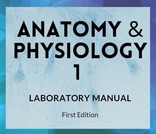
Laboratory manual for undergraduate Anatomy & Physiology 1
- Subject:
- Anatomy/Physiology
- Biology
- Health, Medicine and Nursing
- Material Type:
- Activity/Lab
- Reading
- Teaching/Learning Strategy
- Textbook
- Author:
- Julie Robinson
- Date Added:
- 06/05/2021

Laboratory manual for undergraduate Anatomy & Physiology 1
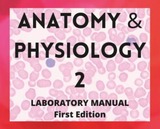
Laboratory manual for undergraduate Anatomy & Physiology 2

Teaching and learning resources for A&P 2. Please check back as I intend to add more.
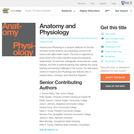
Anatomy and Physiology is a dynamic textbook for the two-semester human anatomy and physiology course for life science and allied health majors. The book is organized by body system and covers standard scope and sequence requirements. Its lucid text, strategically constructed art, career features, and links to external learning tools address the critical teaching and learning challenges in the course. The web-based version of Anatomy and Physiology also features links to surgical videos, histology, and interactive diagrams.
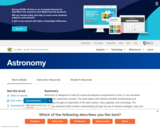
Astronomy is designed to meet the scope and sequence requirements of one- or two-semester introductory astronomy courses. The book begins with relevant scientific fundamentals and progresses through an exploration of the solar system, stars, galaxies, and cosmology. The Astronomy textbook builds student understanding through the use of relevant analogies, clear and non-technical explanations, and rich illustrations. Mathematics is included in a flexible manner to meet the needs of individual instructors.
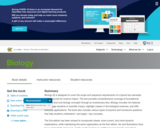
Biology 2e is designed to cover the scope and sequence requirements of a typical two-semester biology course for science majors. The text provides comprehensive coverage of foundational research and core biology concepts through an evolutionary lens. Biology includes rich features that engage students in scientific inquiry, highlight careers in the biological sciences, and offer everyday applications. The book also includes various types of practice and homework questions that help students understand—and apply—key concepts.
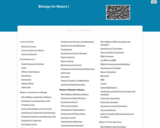
This gateway biology course provides a strong foundation in the principles of biology for students majoring in Natural Science, medical and healthcare fields. It is the second of a two-course sequence. Primary topics such as the history of life, body systems, and ecology are covered in this course.
This course was developed by Lumen Learning, with contributing work from Shelli Carter. The course is based on the OpenStax textbook Biology, supplemented with relevant materials from Khan Academy and videos from multiple sources. Original practice activities were authored by Shelli Carter and Lumen Learning in the development of this course.
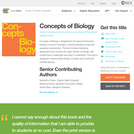
Concepts of Biology is designed for the introductory biology course for nonmajors taught at most two- and four-year colleges. The scope, sequence, and level of the program are designed to match typical course syllabi in the market. Concepts of Biology includes interesting applications, features a rich art program, and conveys the major themes of biology.

This is a learning "adventure" (i.e. interactive learning) for body tissues created for an Anatomy & Physiology 1 course. It can be modified for different concepts and is suitable for use in lecture, lab, or outside of class time as an independent assignment.
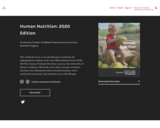
Short Description:
This textbook serves as an introduction to nutrition for undergraduate students and is the OER textbook for the FSHN 185 The Science of Human Nutrition course at the University of Hawai'i at Mānoa. The book covers basic concepts in human nutrition, key information about essential nutrients, basic nutritional assessment, and nutrition across the lifespan.
Word Count: 192929
ISBN: 978-1-948027-08-3
(Note: This resource's metadata has been created automatically by reformatting and/or combining the information that the author initially provided as part of a bulk import process.)
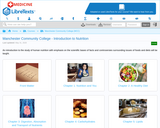
An introduction to the study of human nutrition with emphasis on the scientific bases of facts and controversies surrounding issues of foods and diets.
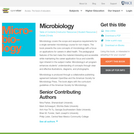
Microbiology covers the scope and sequence requirements for a single-semester microbiology course for non-majors. The book presents the core concepts of microbiology with a focus on applications for careers in allied health. The pedagogical features of the text make the material interesting and accessible while maintaining the career-application focus and scientific rigor inherent in the subject matter. Microbiology’s art program enhances students’ understanding of concepts through clear and effective illustrations, diagrams, and photographs.

Chemistry is designed to meet the scope and sequence requirements of the two-semester general chemistry course. The textbook provides an important opportunity for students to learn the core concepts of chemistry and understand how those concepts apply to their lives and the world around them. The book also includes a number of innovative features, including interactive exercises and real-world applications, designed to enhance student learning.
Coverage and scope
Our Chemistry textbook adheres to the scope and sequence of most general chemistry courses nationwide. We strive to make chemistry, as a discipline, interesting and accessible to students. With this objective in mind, the content of this textbook has been developed and arranged to provide a logical progression from fundamental to more advanced concepts of chemical science. Topics are introduced within the context of familiar experiences whenever possible, treated with an appropriate rigor to satisfy the intellect of the learner, and reinforced in subsequent discussions of related content. The organization and pedagogical features were developed and vetted with feedback from chemistry educators dedicated to the project.
Chapter 1: Essential Ideas
Chapter 2: Atoms, Molecules, and Ions
Chapter 3: Composition of Substances and Solutions
Chapter 4: Stoichiometry of Chemical Reactions
Chapter 5: Thermochemistry
Chapter 6: Electronic Structures and Periodic Properties of Elements
Chapter 7: Chemical Bonding and Molecular Geometry
Chapter 8: Advanced Theories of Covalent Bonding
Chapter 9: Gases
Chapter 10: Liquids and Solids
Chapter 11: Solutions and Colloids
Chapter 12: Kinetics
Chapter 13: Fundamental Equilibrium Concepts
Chapter 14: Acid-Base Equilibria
Chapter 15: Equilibria of Other Reaction Classes
Chapter 16: Thermodynamics
Chapter 17: Electrochemistry
Chapter 18: Representative Metals, Metalloids, and Nonmetals
Chapter 19: Transition Metals and Coordination Chemistry
Chapter 20: Organic Chemistry
Chapter 21: Nuclear Chemistry
Pedagogical foundation and features
Throughout Chemistry, you will find features that draw the students into scientific inquiry by taking selected topics a step further. Students and educators alike will appreciate discussions in these feature boxes.
Chemistry in Everyday Life ties chemistry concepts to everyday issues and real-world applications of science that students encounter in their lives. Topics include cell phones, solar thermal energy power plants, plastics recycling, and measuring blood pressure.
How Sciences Interconnect feature boxes discuss chemistry in context of its interconnectedness with other scientific disciplines. Topics include neurotransmitters, greenhouse gases and climate change, and proteins and enzymes.
Portrait of a Chemist presents a short bio and an introduction to the work of prominent figures from history and present day so that students can see the “face” of contributors in this field as well as science in action.
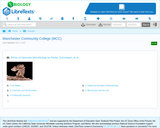
A remix of OpenStax: Microbiology by PARKER, SCHNEEGURT, THI TU, FORESTER and LISTER